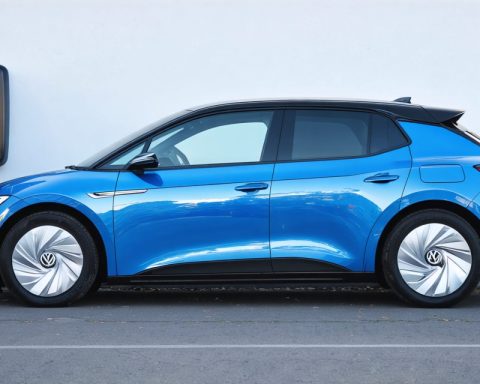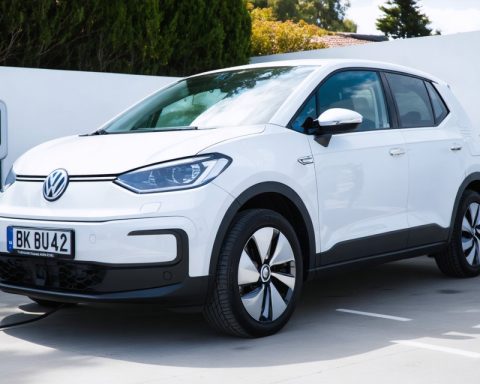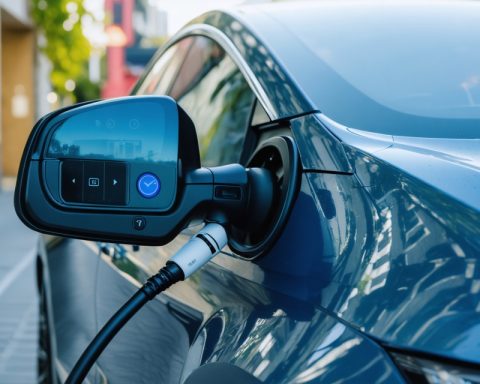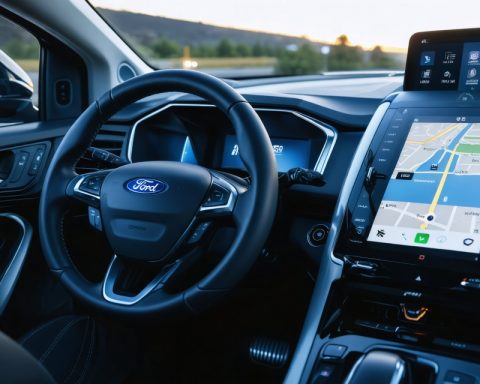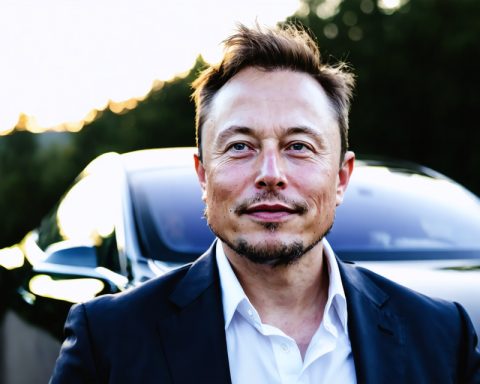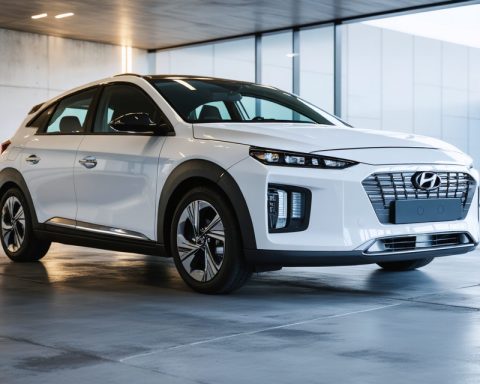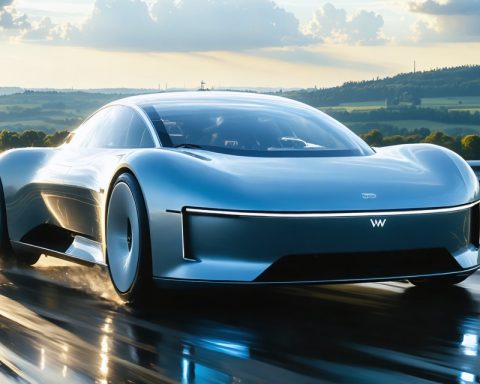- Starting September 30, 2025, single-occupant electric and alternative fuel vehicles will lose special access to HOV lanes in Phoenix unless Congress intervenes.
- The Federal Highway Administration’s directive marks a shift in the commuting landscape for electric and green technology-driven vehicles.
- The Arizona Department of Transportation (ADOT) has launched a website (azdot.gov/HOVRule) to guide and inform motorists and businesses about this change.
- This change reflects broader trends in federal transportation policy with ongoing legislative discussions potentially impacting the decision.
- ADOT is actively informing auto dealers and vehicle owners with Alternative Fuel or Energy Efficient plates about forthcoming changes.
- This transition underscores the movement towards innovative and adaptive transportation solutions in Arizona.
Beneath the relentless sun of the Arizona desert, a silent shift is stirring the landscape of daily commutes in Phoenix. Picture the once tranquil electric cars, gliding past traffic on their exclusive strip of asphalt, soon to be part of the hustle they’re used to bypassing. The Federal Highway Administration has issued a directive that electrifies this tranquil scene with impending change.
Come September 30, 2025, the privileged access that single-occupant electric vehicles enjoy on the high-occupancy vehicle (HOV) lanes will draw to a close—unless Congress decides otherwise. This picturesque asphalt fast lane has long been a secret weapon for electric and other alternative fuel vehicle owners in Arizona, offering a reprieve from the tangled congestion of rush hour. From electric cars to those powered exclusively by natural gas, propane, and even methanol, this diverse fleet has been weaving silently through traffic, an emblem of green technology embraced.
The Arizona Department of Transportation (ADOT) is ahead of the curve, ready to guide vehicle owners through this pivotal transition with the launch of a dedicated website at azdot.gov/HOVRule. This digital waypoint stands as a beacon of information and preparation, ensuring that neither motorists nor businesses are left in the dark when the HOV lane gates close.
This gradual sunset of privileges coincides with a greater conversation weaving through the federal tapestry. As the needle edges closer to decision, Congress holds the power to alter the trajectory. While this legislative uncertainty looms, ADOT proactively broadcasts the potential change, bridging knowledge gaps for motorists and stakeholders alike. The reach is wide, touching the lives of travelers who traverse Arizona’s freeways, prospective buyers eyeing alternative fuel vehicles, and businesses keenly navigating this verdant market.
ADOT’s Motor Vehicle Division is keenly in the know, voicing this evolution to auto dealers and spreading awareness among current drivers of vehicles with Alternative Fuel or Energy Efficient plates. Thus, as the sands continue to shift, the road map is ready to guide Arizona through this automotive evolution.
Navigating the intricate dance of policy and technology, the takeaway is clear: Prepare now, for the rhythm of daily commuting is set to change against the backdrop of Arizona’s expansive horizon. The era of unfettered HOV lane access for alternative fuel vehicles may well be on its sunset ride, but the journey into a new era of innovation and adaptation begins as the dusk settles over the desert sky.
New HOV Lane Rules in Arizona: What You Need to Know and How to Prepare
Understanding the Changing Landscape for Arizona’s HOV Lanes
In Arizona, the sun-baked roads and bustling freeways are part of daily life, especially in Phoenix. Electric vehicles (EVs) and alternative fuel cars have long enjoyed an invaluable perk: access to the high-occupancy vehicle (HOV) lanes, even with a single occupant. This benefit, however, is poised for a significant change. As of September 30, 2025, these privileges could end unless Congress intervenes. This shift in policy comes amid a broader conversation about traffic management and EV incentives on a national level.
Preparing for the Change: Steps You Can Take
1. Stay Informed:
– Check the Arizona Department of Transportation’s (ADOT) official website regularly at ADOT’s official website for updates.
– Subscribe to newsletters or announcements from local traffic authorities for the latest developments.
2. Plan Alternate Routes:
– Familiarize yourself with alternate routes to your daily destinations. Consider using traffic applications like Google Maps or Waze for real-time updates.
3. Carpool Options:
– Explore carpooling as an alternative to maintain access to HOV lanes. Platforms such as Carpoolworld or local carpool networks can connect you with other commuters.
4. Evaluate Your Vehicle Options:
– If access to HOV lanes is a major factor for you, consider investing in vehicles that qualify under the changed specifications once new rules are clarified.
Real-World Impact and Industry Trends
– EV and Alternative Fuel Vehicle (AFV) Market Dynamics:
– Arizona has seen a consistent increase in EV and AFV sales due to incentives like HOV lane access. The ending of this perk might impact future sales and the state’s environmental goals.
– Companies might adjust their regional marketing strategies and buyer incentives.
– Infrastructure Development:
– As EV adoption increases, there will likely be further expansion of charging infrastructure. This growth aligns with federal goals for sustainable transportation and reduced emissions.
Security and Sustainability
– Environmental Impact:
– Reducing the number of single-occupant vehicles in HOV lanes may help optimize traffic flow, lower emissions, and improve urban air quality.
– This policy shift encourages innovation in other automotive incentives focused on sustainability, such as enhanced charging networks or tax credits.
Predictions and Insights
– Regulatory Evolution:
– Experts predict an evolving regulatory environment as states and the federal government address both congestion and environmental targets. The rise in EV and AFV adoption pressures policymakers to balance incentives and practical infrastructure changes.
– Public Opinion and Controversies:
– Policy shifts often generate public discourse on efficiency versus accessibility of privileges. Balancing commuter convenience with environmental responsibility will remain central to future legislative discussions.
Actionable Recommendations
– Adapt Enthusiastically:
– Embrace changes as opportunities for discovering new commuting patterns or carpool partners.
– Engage with Advocacy Groups:
– Participate in discussions or forums advocating for EV and commuter benefits, influencing policy changes or extensions based on commuter feedback.
– Consider New Technologies:
– Stay ahead of trends by considering vehicles with emerging technologies that may offer new incentives in the future.
In conclusion, while the sun sets on HOV lane privileges for single-occupant alternative fuel vehicles, it’s also the dawn of opportunity to innovate and adapt in personal transportation choices. For more about infrastructure updates and commuter solutions, visit the Arizona Department of Transportation.

